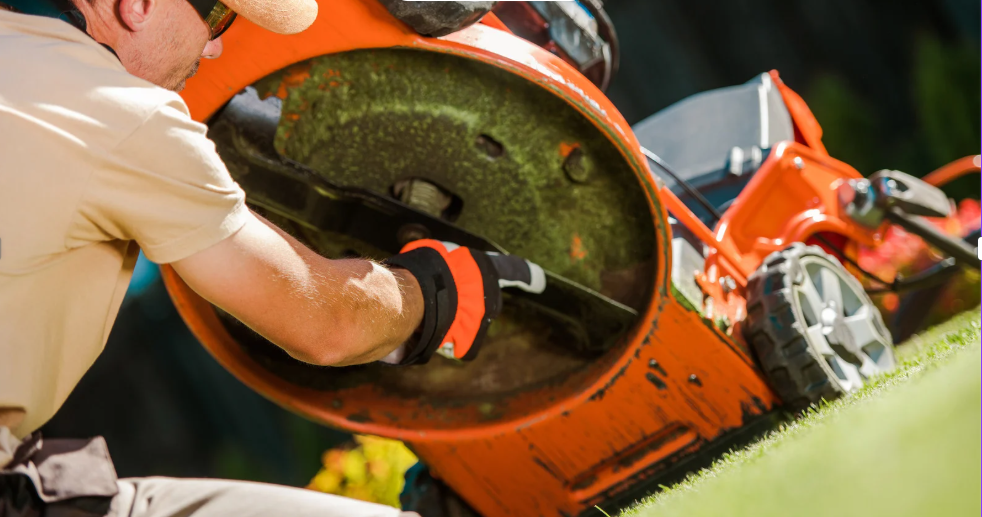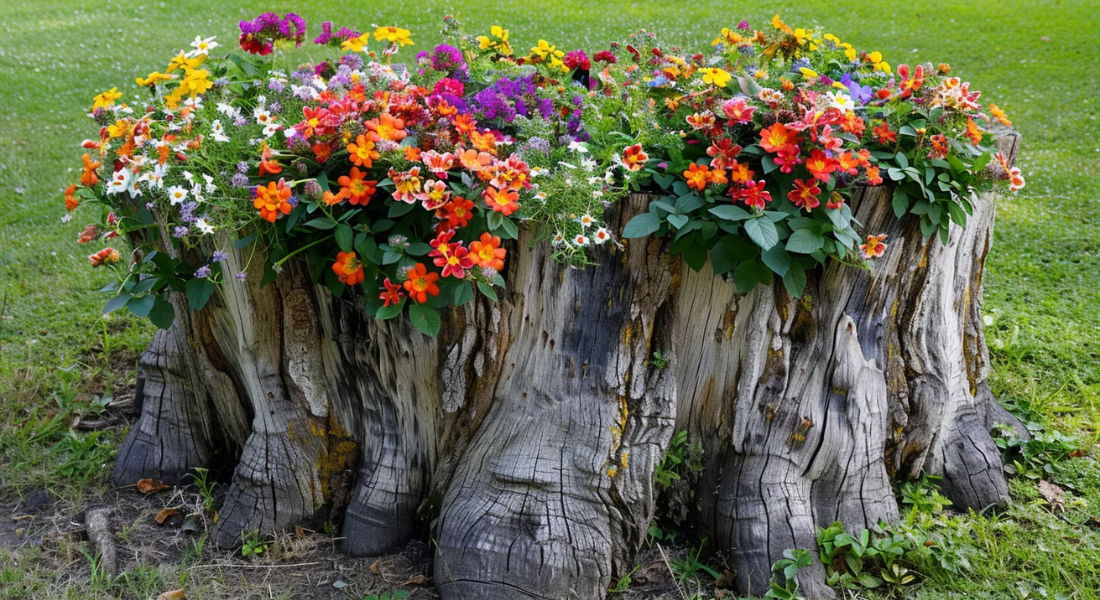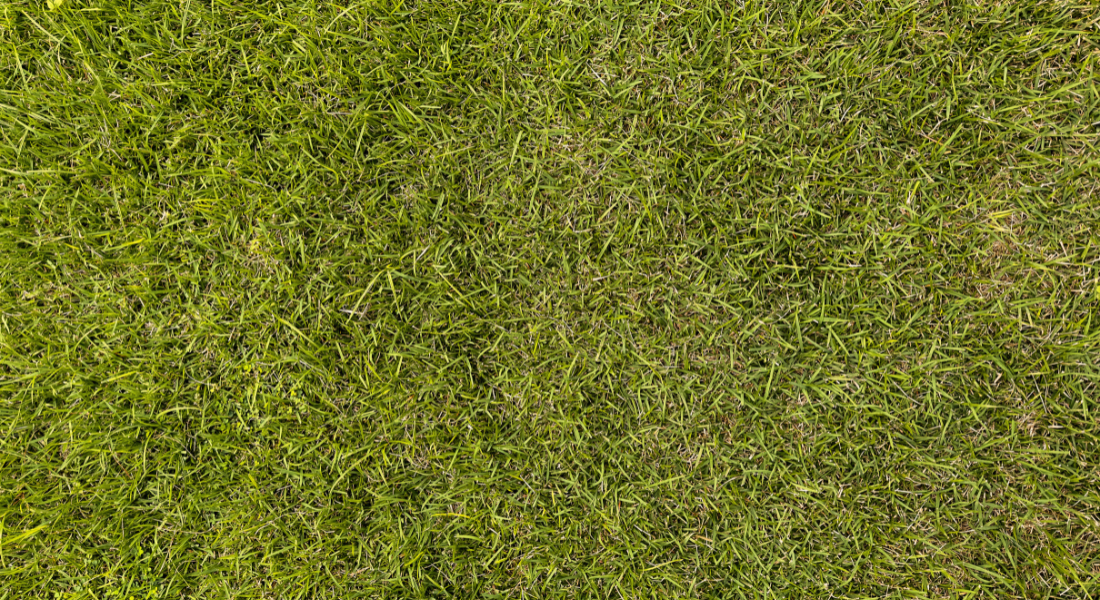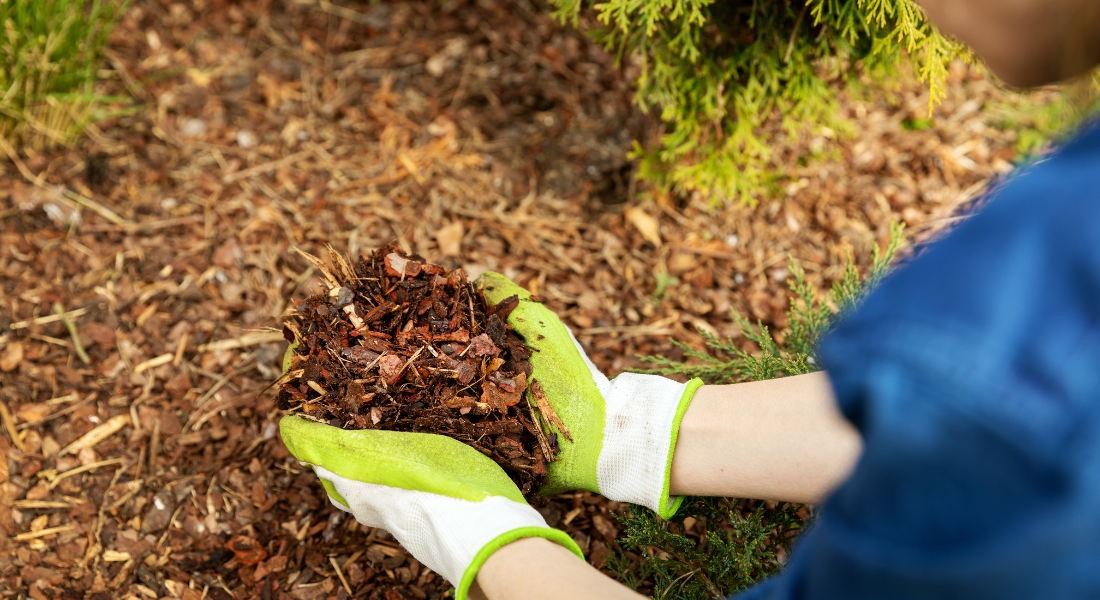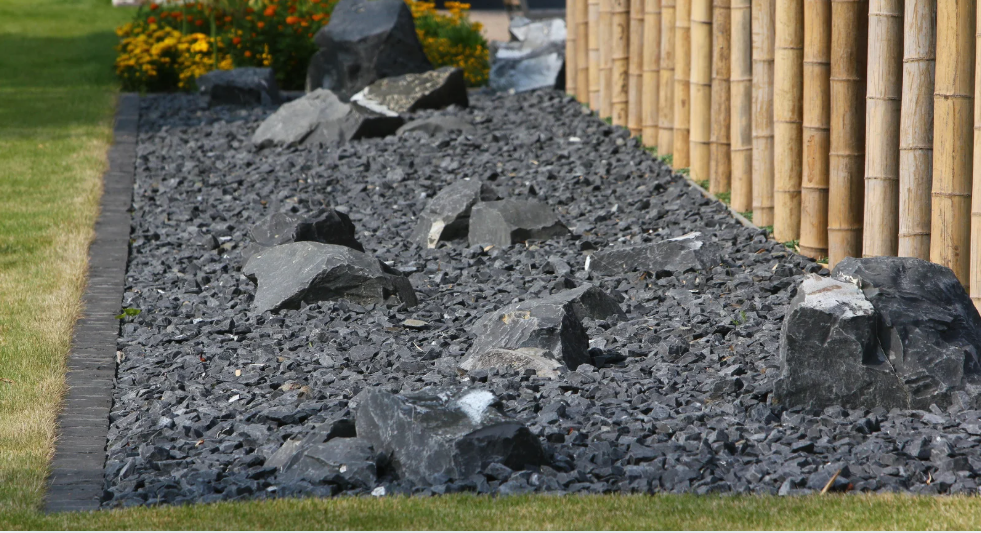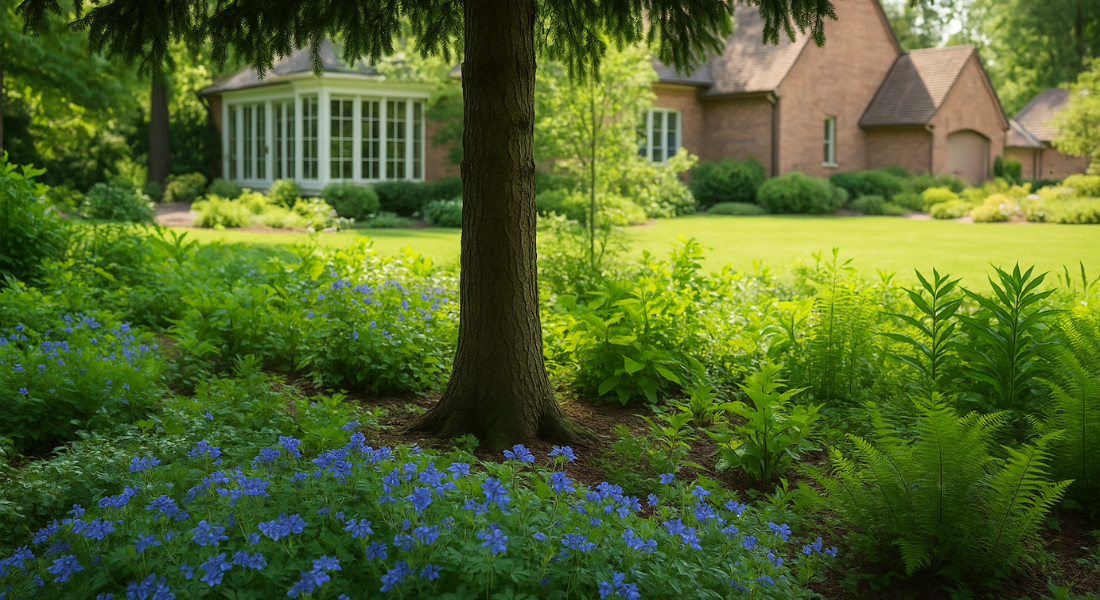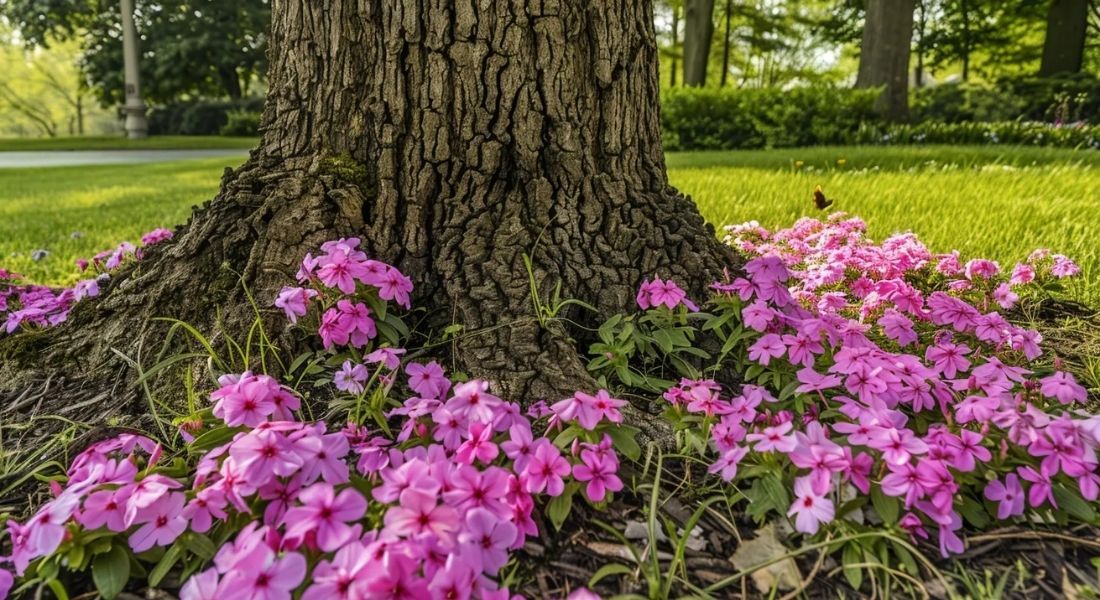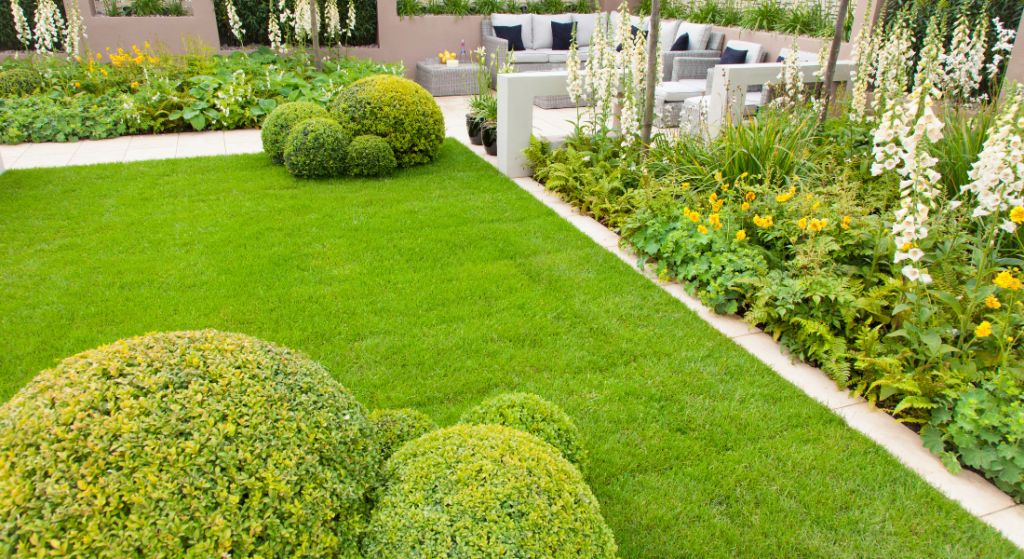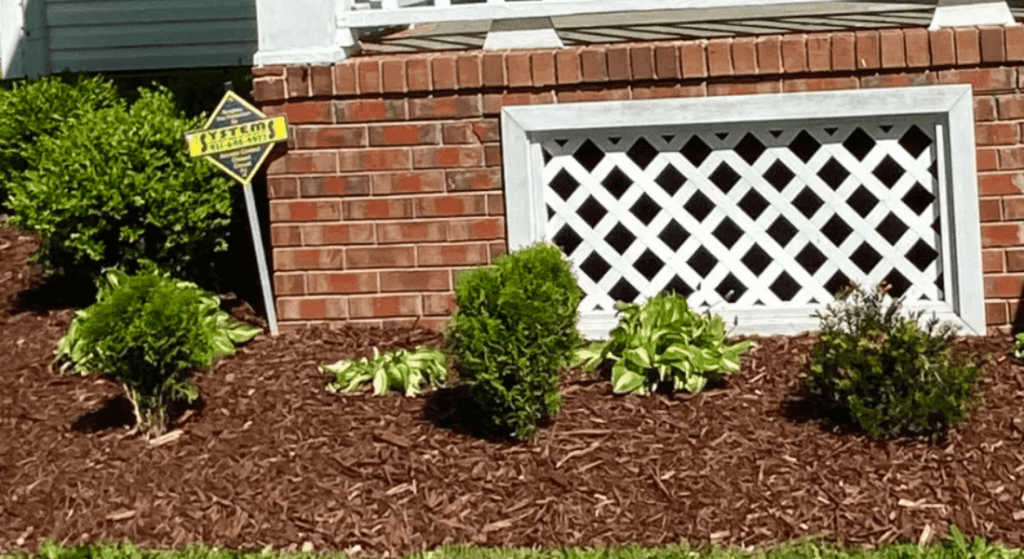How to Choose the Best Landscaping Rocks to Make Your Yard Look Great!
If you’re planning a stunning landscape design, landscape rock should be at the top of your materials list. Rocks are not only durable and low-maintenance, but they also add texture, contrast, and beauty to any yard or garden. From river rock and lava rock to flagstone and pea gravel, the types of landscaping rocks available today make it easy to transform your space into something both practical and eye-catching.
This guide breaks down the best landscaping rocks, how to use them effectively, and how to choose the right landscaping rocks for your specific needs. Whether you’re tackling a DIY landscaping project or working with a pro, this article will help you understand the different types of landscaping materials so you can make confident choices that look great and last for years.
What Is Landscape Rock and Why Should You Use It?
Landscape rock refers to a broad range of natural stones used in outdoor design projects. From walkways to garden beds, rocks can be used in countless ways to add beauty and functionality to your yard.
Unlike mulch, which decomposes and requires regular replacement, landscape rock is long-lasting, doesn’t attract pests, and helps with drainage. It’s ideal for areas that need erosion control, low-water planting beds, or a more natural look. Rocks can also act as a durable ground cover, keeping weeds down and soil temperature stable.
When planning your next landscaping project, incorporating rock into the design can give it structure, character, and timeless appeal.
What Are the Different Types of Landscaping Rocks?
Understanding the different types of landscaping rocks helps you select the best material for your design and purpose. Here are some of the most popular landscaping rocks:
- River rock – Smooth, rounded stones perfect for dry creek beds, water features, or walkways.
- Lava rock – A lightweight, porous volcanic rock known for its bold color and texture, often used in garden beds.
- Pea gravel – Small stones about the size of a pea, often used in patios, walkways, or as ground cover.
- Crushed stone – Rough, angular rock typically used for driveways or beneath pavers.
- Flagstone – Flat, wide stones that are great for patios, stepping stones, or walkways.
These landscaping materials come in many shapes, sizes, and colors, giving you endless possibilities when choosing landscaping elements for your yard.
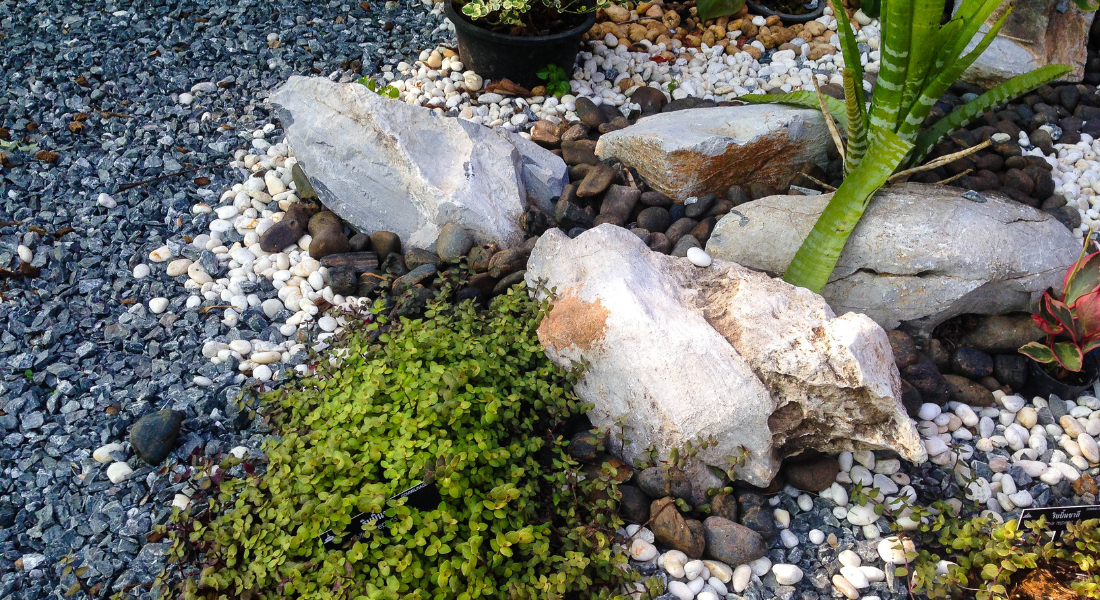
What Is the Best Landscaping Rock for Walkways?
When it comes to building a walkway, not all rocks are created equal. You want something stable, comfortable to walk on, and visually appealing.
Flagstone is a top choice for walkways because of its flat surface and natural stone beauty. It’s durable, easy to install, and offers a classic look that complements almost any landscape design. If you prefer a looser fill, pea gravel is another great option — it’s budget-friendly, easy to work with, and adds a charming crunch underfoot.
Just remember: rock size matters. Smaller rocks like pea gravel work well for high-traffic areas, while larger rocks may cause tripping or be harder to walk on.
How Do You Choose the Right Landscaping Rocks for Your Yard?
To choose the right landscaping rocks, start by considering your goals. Do you want something decorative, functional, or both? Do you need to control erosion, create paths, or build retaining walls?
Here are some tips to help you select rocks:
- For decorative accents or rock gardens, go with pebble, lava rock, or natural stone.
- For structure and durability, use flagstone, crushed stone, or boulders.
- For drainage or dry areas, choose river rock or gravel.
Choosing landscaping rocks based on size and shape, your local climate, and the surrounding types of plants will help you choose the best rocks for your yard.
How Is River Rock Used in Landscaping?
River rock is one of the most popular landscaping rocks thanks to its smooth texture and versatile size range. River rocks are also excellent for creating a natural look in modern or rustic designs.
They’re commonly used in:
- Creek beds or dry creek channels to manage drainage.
- Around water features for a polished appearance.
- Along the edge of walkways or patios for contrast and texture.
Because river rock comes in various colors and sizes, it fits well with many styles and serves both functional and decorative purposes.
What Is Lava Rock Best Used For?
Lava rock is a popular material in southwestern-style landscapes, but its use goes far beyond looks. This lightweight volcanic rock retains moisture while promoting drainage, making it a smart choice for garden beds.
Here are the best ways to use lava rock:
- As mulch in flower beds to control weeds and regulate soil temperature.
- Around trees or shrubs to add contrast and retain moisture.
- In xeriscaping projects where water conservation is key.
Since lava rock doesn’t break down like organic mulch, it’s a low-maintenance choice that lasts for years.
What’s the Difference Between Pea Gravel and Crushed Stone?
Both pea gravel and crushed stone are small, loose-fill materials, but they serve different purposes.
Pea gravel:
- Rounded and smooth
- Available in a variety of natural colors
- Best for walkways, play areas, or patios
Crushed stone:
- Angular and sharp
- Locks into place better
- Often used under pavers, in driveways, or for drainage
When choosing landscaping rocks, understanding the different types like these helps you select the right rock type for your specific landscaping needs.
How Much Rock Should You Use in a Landscaping Project?
The amount of rocks you need depends on your landscaping project size, the rock size, and the type of rock you're using. As a general rule, calculate the square footage of your area and multiply it by the depth you want to fill.
A stone yard or landscape supply company can help you estimate the right quantity. Rocks like pea gravel, lava rock, or crushed stone are typically sold by the cubic yard or ton.
Tip: Always order a little extra to account for uneven ground or coverage adjustments.
What Are the Best Rocks for a Rock Garden or Accent Feature?
If you want a beautiful focal point in your yard, consider creating a rock garden or accent feature using decorative rock. The best rocks for these features include:
- Larger rocks or boulders for height and structure
- Colorful pebble or lava rock for texture and interest
- Layered flagstone for creating stacked stone walls or features
The key is to choose rocks that contrast with your plants and add dimension to your design. Pair with landscape fabric to prevent weeds and make your display low maintenance.
What Are Some DIY Landscaping Ideas Using Rocks?
Looking for DIY landscaping inspiration? Here are a few creative ideas using landscape rock:
- Dry creek bed – Use river rock to simulate a natural stream and direct rain runoff.
- Pebble garden bed edge – Outline your garden bed with small pebbles for a clean, tidy look.
- Stepping stones – Lay flagstone or pavers with pea gravel between them for an elegant path.
- Mulch replacement – Swap traditional mulch with lava rock or crushed stone for long-lasting ground cover.
These landscaping ideas are easy to start, and rocks can give your space a polished finish while requiring very little upkeep.
Rock Installation In Clarksville, TN, with GreenLife Services
Want to upgrade your yard with beautiful landscape rock? GreenLife Services makes it simple. We offer expert rock installation in Clarksville and nearby areas, helping you create clean, low-maintenance spaces that look great year-round. Whether you need a walkway, garden bed border, or full landscape refresh, our team can help you choose the right rock and install it the right way. Call us at (931) 228-8680 for a free quote!
Summary: Key Takeaways for Using Landscape Rock
Landscape rock is versatile, durable, and low-maintenance.
- There are many types of landscaping rocks, including river rock, lava rock, pea gravel, crushed stone, and flagstone.
- Use flagstone or pea gravel for walkways, and lava rock or river rock for garden beds and drainage.
- Always consider rock size, purpose, and location before buying.
- Combine decorative rock with plants for natural texture and contrast.
- Consult a stone yard for accurate quantity estimates.
- Try DIY landscaping ideas like a dry creek bed, rock walkways, or rock gardens.
By taking time to choose the right landscaping rocks for your space, you’ll be creating a landscaping project that will look great and last for years to come.
FAQs
Q. What is the best type of rock for landscaping?
The best type of rock for landscaping depends on where and how you plan to use it. River rock is great for decorative borders, garden beds, and drainage. Lava rock is ideal for mulching and moisture retention. Flagstone works well for patios and walkways. Pea gravel is perfect for paths and play areas. Each type has its strengths, so the best choice depends on your specific landscaping needs and design style.
Q. What is the best rock to prevent weeds in landscaping?
A. Crushed stone and lava rock are among the best rocks for preventing weeds. These rocks are dense and cover the soil well, helping block sunlight and stopping weed growth. Using a layer of landscape fabric underneath the rock adds extra protection and reduces the chance of weeds breaking through. Lava rock is especially useful because it also helps retain moisture while being low maintenance.
Q. What size rock is best for landscaping?
A. The best rock size for landscaping depends on the area you're covering. For paths and walkways, small rocks like pea gravel (about the size of a pea) are comfortable to walk on. Medium-sized rocks, such as river rock, are great for flower beds and around trees. Larger rocks or boulders are best for accent features, edging, or retaining walls. Choosing the right size helps ensure both function and appearance in your landscape.
Q. What is the best value landscape rock?
A. Pea gravel and crushed stone are often the best value landscape rocks. They are affordable, easy to install, and can be used in a variety of ways, including walkways, patios, and ground cover. These options provide a good balance between cost and performance. If you're looking for decorative appeal on a budget, pea gravel offers great versatility without breaking the bank.
